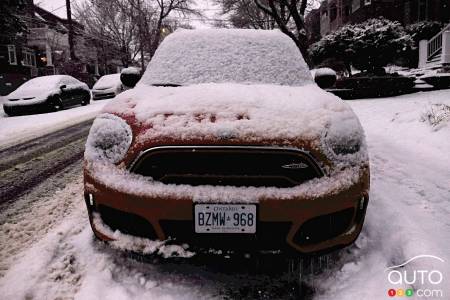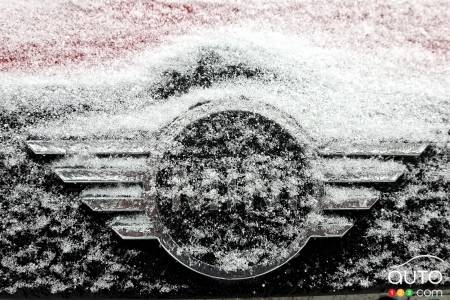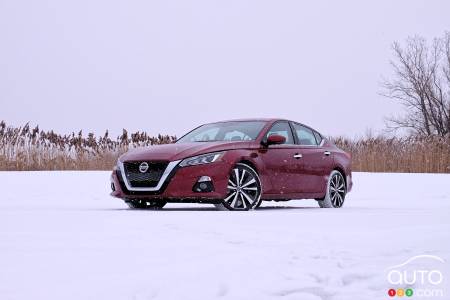Winter is starting to bare its teeth in different parts of the country, and we can expect winter driving conditions to settle in good and proper in the coming weeks. Say hello to snow, ice, slush and everyone’s favourite, freezing rain.
If those words don’t stress you out, know that a recent survey conducted by Belairdirect shows that half of Canadian motorists don’t feel ready to tackle winter.
There is a caveat to the data, given that in some parts of the country, motorists are far more habituated to driving in wintry conditions than in others. Still, the numbers are definitely food for thought.
Like this one: only 45 percent of Canadian say they feel ready to take on winter driving. Which of course means that over half don’t feel confident about their skills in wintry conditions.
Or this one: 34 percent of respondents believe that the skills of other drivers on the road on their province are worse than average.
Put those two together and you have a chunk of the populace that feels like they’re lousy drivers, but that many other drivers are even worse!
Discover Shopicar! All new makes and models and all current promotions.

Fun fact: Within the provinces, the highest percentage of motorists that find others to be below-average is found in Alberta, at 37%. In Ontario that drops to 32 percent, while in Quebec, only 24 percent of motorists feel others suck at motoring during the winter months.
See also: Winter Driving: the Auto123.com Guide
The survey reveals furthermore that many Canadians’ ineptness in regards to winter driving involves more than just lack of skill. Only 38 percent of respondents report that they have placed the proper equipment and gear in their vehicle for the cold months ahead.
Most did say their vehicle contains a snow brush/scraper (92 percent claim to have one, which of course begs the question, what the heck do the other 8 percent use, their sleeves?); but only 66 percent have an extra container of windshield-wiper fluid; and 58 percent had packed a blanket and a change of warm clothes into the trunk. Although, frankly, we would have expected that last percentage to be much lower. Good on you, Canadians! (or at least, 58 percent of you).
Back to the driving skills, or evident lack of them. Some of the data is fairly troubling. For example, in the case of a car skidding out, only three out of five motorists know that they should turn the wheels in the direction they want the vehicle to go. Regarding this manœuvre, Quebec motorists fared best (67 percent said they know what to do), while for Ontario the percentage is 59.
More encouragingly, 94 percent of motorists did know that they should slow down gradually when they start to slide. Our advice is to stay as far away as possible from that other 6 percent that feels there’s no need to slow down during a skid (or that’s it best to slam on the brakes!).
See also: Surviving Winter in your Car: Here's What You Need to Do
There are a couple of other statistics found in this survey that caught our eye. According to the telemetrics data collected by Belairdirect, the amount of driving above 100 km/h goes down by 25 percent in wintertime. It would be interesting to see if this happens mainly during snow storms or falls, and that Canadian motorists drive just as fast the rest of the time, but we’ll choose to look at the glass half-full.
The other bit of data worth noting is one that shows Canadians appear to simply drive less in the wintertime: on average, motorists drive 24 percent fewer kilometres less and spend 20 percent less time on the road during the winter months.
We could go on a long time dissecting and interpreting numbers, but this survey does provide an interesting snapshot of Canadians’ attitude towards winter driving. We’ll end with a simple to-do list of resonable steps to take, courtesy Belairdirect:
1. Prepare for winter: Make sure you have a basic winter toolkit in your car including an ice scraper, extra windshield washer fluid, sand for traction, road flares, warm clothes and blankets.
2. Pick the right tires: Having actual winter tires is an investment in your own safety. Make sure to choose a quality brand you can rely on. You can consult our very useful guides to Winter Tires for Cars to Winter Tires for SUVs and Trucks.
3. Slow down: When road conditions are uncertain, it’s important to slow down to identify potential risks. When facing icy roads, remember to refrain from making any sudden movements and gradually slow down to stay in control of your vehicle.
4. Keep calm: A lower stress level means more composed and thoughtful reflexes. It allows you to stay in control and keep your mind alert to what's happening in front of and around you.
5. Maintain your distance: Driving behind large trucks can cause snow, ice or water to splash onto your windshield. The panic due to a temporary loss of visibility may lead drivers to lose control, so it’s important to keep a safe distance of at least a few lengths behind bigger vehicles.
6. Stay informed: Before hitting the road, check the weather forecast to have an idea of the potential road conditions in advance. If it’s too risky, it may be wise to choose to stay home.




